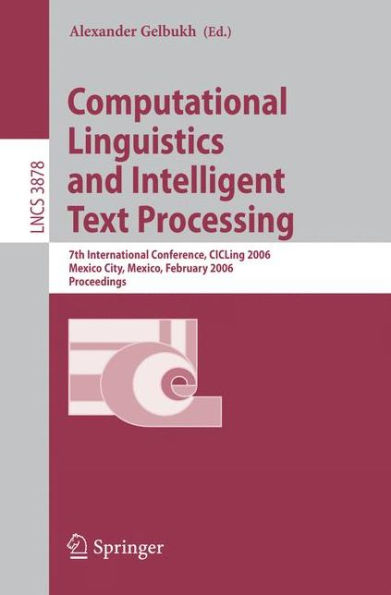5
1
9783540322054


Computational Linguistics and Intelligent Text Processing: 7th International Conference, CICLing 2006, Mexico City, Mexico, February 19-25, 2006, Proceedings / Edition 1 available in Paperback

Computational Linguistics and Intelligent Text Processing: 7th International Conference, CICLing 2006, Mexico City, Mexico, February 19-25, 2006, Proceedings / Edition 1
- ISBN-10:
- 3540322051
- ISBN-13:
- 9783540322054
- Pub. Date:
- 03/16/2006
- Publisher:
- Springer Berlin Heidelberg
- ISBN-10:
- 3540322051
- ISBN-13:
- 9783540322054
- Pub. Date:
- 03/16/2006
- Publisher:
- Springer Berlin Heidelberg
109.99
In Stock

Product Details
| ISBN-13: | 9783540322054 |
|---|---|
| Publisher: | Springer Berlin Heidelberg |
| Publication date: | 03/16/2006 |
| Series: | Lecture Notes in Computer Science , #3878 |
| Edition description: | 2006 |
| Pages: | 572 |
| Product dimensions: | 6.10(w) x 9.25(h) x 0.05(d) |
From the B&N Reads Blog
